
At Hoover we design and install advanced irrigation pumping systems. The pump stations we design and install are large scale and highly complex, created to deal with the irrigation requirements of bodies such as residential communities, shopping malls, business parks and golf courses and sports facilities.
One fact remains constant, however: Any good irrigation system needs the foundation of a reliable supply of clean water if it is to operate effectively. And for us that means, wherever possible, basing irrigation around an irrigation lake.
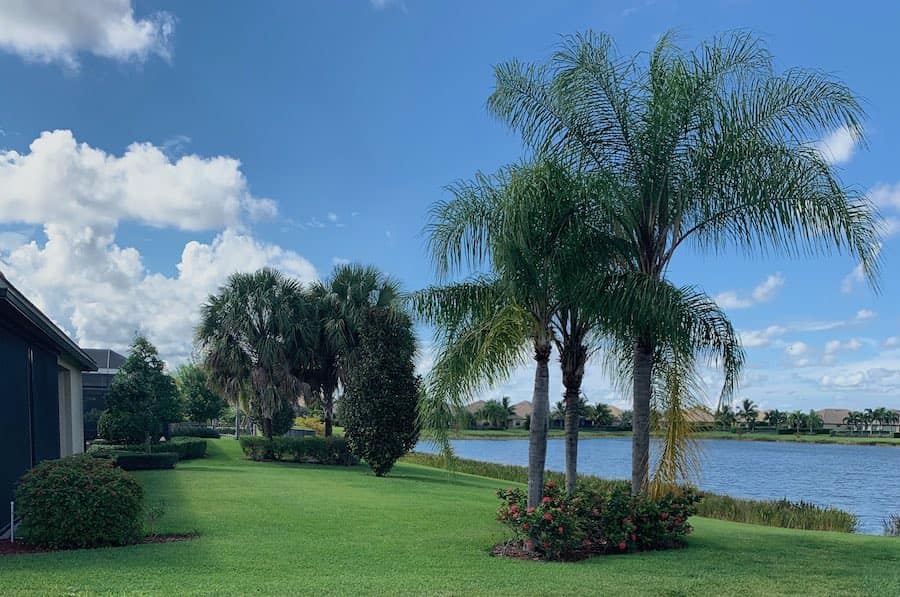
According to the Environmental Protection Agency (EPA), there are somewhere close to 8,000 lakes in Florida, meaning that, more often than not, they represent a very accessible source of water. Lakes of this kind are self-sustaining, meaning that once the system is in place and water is being pumped out, the supply of water can be relied upon. The natural sustainability (combined with effective management and monitoring) also means a lake represents the eco-friendly choice. Above and beyond the water itself, a well-regulated and managed body of water can help to provide a home for flora native to Florida, as well as a haven for fish, birds and other types of wildlife. Finally, an irrigation lake combines effectiveness as a source of irrigation water with undeniable aesthetic appeal for anyone living or working close to it.
Perhaps the first question to answer regarding pumping water from a lake for irrigation purposes is whether you are, in fact, allowed to do so. Since many of our case studies deal with highly effective irrigation systems based around man-made irrigation lakes the answer is clearly yes, but it's probably worth briefly outlining the precise details of the legal position with regard to pumping water from a lake. The minutiae will differ from state to state and even within individual counties, and the first place to make enquiries would be your state’s water resources department or environmental protection department. In Florida, the Department of Environmental Protection manages water resources at state level, and oversees the management at regional level via the operation of five water management districts:
These districts handle issues such as water supply, water quality, flood protection and natural systems. You can check here for a breakdown of the counties contained within each of the five districts.
In nationwide terms the legal doctrine which applies to the consumption of natural water is that a property owner is allowed to access a body of water which touches their property as long as the use of that water is ‘reasonable’.
Reasonable use generally involves the water being used on the land on which the property owner resides - and not in excessive amounts. Rights of this kind are known as Riparian Rights, and until 1972 they applied pretty much across the board in Florida. Although this approach could lead to water-use conflicts it was generally seen as being fit for purpose until the late 1960s, when a rapidly growing population and increased demand on the water resources of the state led to calls for a cohesive approach to be taken to deal with the issues for water quality and water quantity.
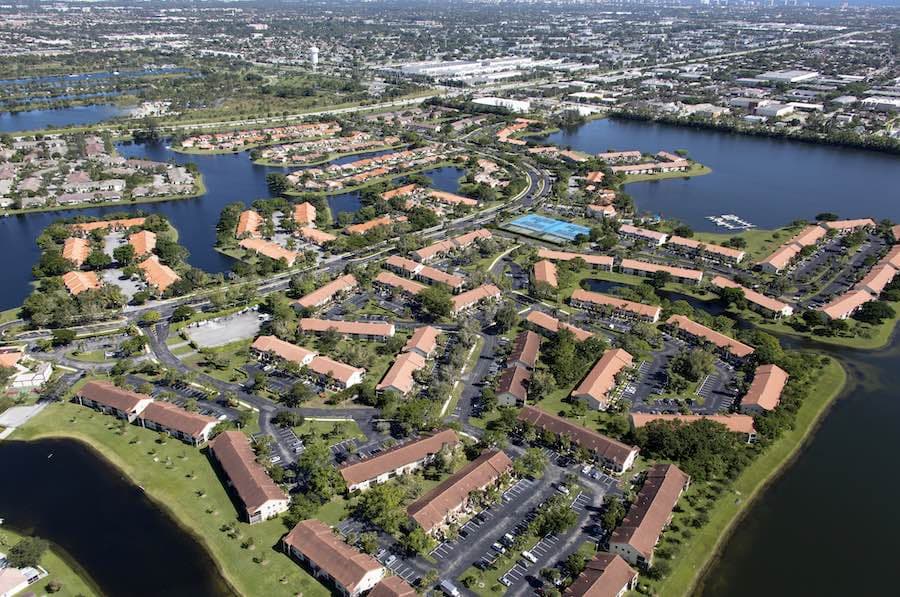
The result of these calls was the Florida Water Resources Act of 1972 which, with the addition of a number of provisions, has remained in place ever since. As well as the creation of the five water management districts already mentioned, the 1972 Act saw the introduction of permit programs designed to regulate water withdrawals from natural resources. These water permits allow for the use of surface and groundwater supplies for the benefit of things such as public water supply, agricultural and landscape irrigation, industrial use, and power generation.
Retention ponds, as irrigation lakes are more accurately (though less attractively) called, aren’t just for aesthetics; they satisfy people's desire to live in attractive, well-watered surroundings. To do this, it’s necessary to prioritise the use and the distribution of any available water effectively.
In the Southwest Florida Water Management District, for example, permits are required in the following cases:
Before we look at the various ways irrigation water is extracted and distributed, we should do a quick overview of what a lake is, how it is replenished, and why, even though Florida has a seemingly abundant source of water in rainfall, there's a need to ensure water is used wisely and well.
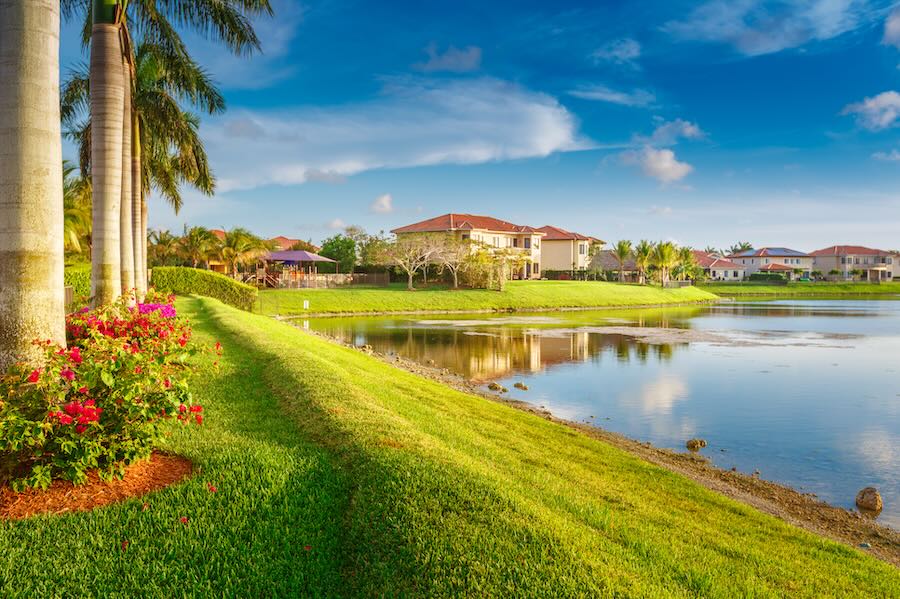
While a well-looked after lake on its own can have enough eye-appeal to enhance the appearance of any landscape, the retention pond is in fact a hard-working, dual-purpose entity, keeping the landscape green through its function as a source of water for irrigation - and a lake water pump system will be designed specifically to address this need by means of an irrigation pump station that draws the water out through pipes which run from the lake under the ground. It’s pressurized and filtered if required, and then dispersed through sprinklers.
The natural groundwater replenishment cycle is sufficient to keep the water in a lake at the right level. However, in some cases, a refill pump can be used to pull water from a different aquifer to recharge. In some parts of Florida, regulations require lakes to be replenished with whatever is taken out, so replenishment becomes a legal obligation, rather than a choice. Water can also be collected from roofs and gutters and directed into the lake.
Torrential rain is a common occurrence here and is more frequent along the coasts where much of the state’s densely populated areas are concentrated. Large tracts of these urban spaces are covered in concrete, pavement, roofs and other impermeable materials that cause stormwater to run-off in extremely large quantities very quickly. A landscape should be designed so that rainwater and irrigation water both drain back into the lake. A rain gauge on the pump station will trigger the pump(s) to stop feeding water to the irrigation system when rainfall reaches a certain level. If flooding is a particular concern, a stormwater pump can be installed to move excess water into an overflow lake when rainfall is heavy.
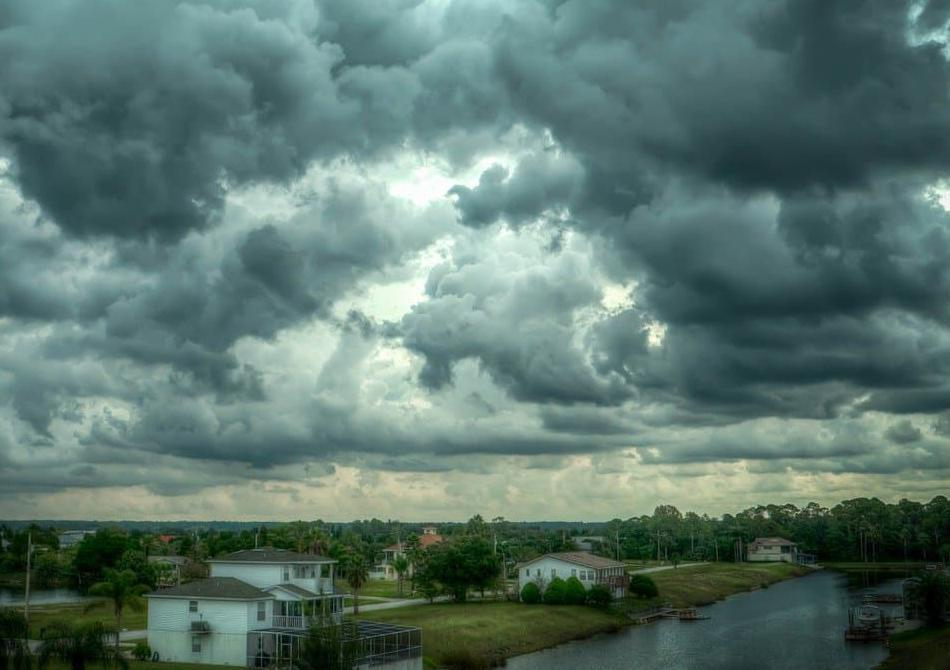
Reducing water waste and ensuring its effective distribution and use has to be our main consideration when it comes to irrigation. However, collecting water from gutters and roofs and replenishing the lake will be a worthless endeavour if the water is being wasted through leaks, clogged pipes or damaged pumps. Rigorous and regular system maintenance, from retention pond to sprinkler heads, is paramount; along with this, today’s smart irrigation tools are also a great asset in the preventative maintenance for irrigation systems toolbox. For example, if you seem to be using more water than usual but the grass is brown and dying, something’s sure to be going wrong; smart irrigation software will send reports and real-time information 24/7 direct to your pc or handheld device, so you can intervene quickly when issues arise.
In short, while trying to get the results you need you should always focus on doing the right thing when it comes to this precious resource; no-one wins if we end up with water that’s unusable.
Once the decision to pump water from a lake has been made, the question to be answered is exactly what type and size of pump will be required. Answering that will depend upon a range of factors, from the depth of the lake to the size and steepness of the embankment and the amount of water needed to irrigate the area in question. Even if you have your irrigation system designed and installed by experts in the field it will pay dividends in terms of future maintenance and efficient operation of that system to understand exactly how it works, if you’re going it alone and installing your own system (not recommended unless you’re dealing with an extremely small area of irrigation) then making the right choice is vital; the wrong pump will provide insufficient water for your requirements or cause damage through the irrigation system.
Although you shouldn't be called upon to make irrigation pump calculations yourself if you're working with a team of professionals, it's never a wasted exercise to arm yourself with a rudimentary understanding of basic principles.
The key metrics to understand when choosing a water pump for a lake are flow rate and pressure. The flow rate deals with the volume of water being pumped through the system, and is expressed in gallons per minute. The pressure is a measure of the force of the water moving through the system, and in simple terms the higher the flow rate and pressure are, the better it generally is for your irrigation system. The issue, however, is that there are many factors at work when water is being taken from a lake and distributed across an irrigation system, factors which might combine to mitigate against a system to achieve the desired pressure and flow rate. These factors include gravity itself, the distance the water has to travel on being pumped from the lake and friction within the system.
The right choice of pump is one which will be able to overcome the various types of resistance present and deliver water with the optimum pressure and flow. That’s why it’s important to understand the nature of the irrigation system itself and, by definition, the flow and pressure of water needed for successful operation. Drip irrigation and sprinkler irrigation may place different demands on the system, for example, but both may be in operation across different parts of an irrigation layout, with some zones utilizing sprinkles and others drip emitters. Understanding the overall demands of the system will be vitally important when selecting the right pump. The figures used when calculating the size of pump needed are gallons per minute (GPM), which is the flow rate, and total dynamic head (TDH) which is the pressure. Calculating the GPM should be relatively simple as it is a single metric, namely the amount of water you want to apply to the landscape. The TDH is slightly more complex as it involves three metrics – the vertical lift required (often referred to as static head), the operating pressure and any friction loss.
Once you have the static head, operating pressure and friction loss figures to hand you can add them together to produce the total dynamic head (TDH), a measure of the resistance a pump will need to overcome to send water through your irrigation system.
With the TDH in feet and the flow rate in GPM you should be able to select a pump which is suited to your requirements. Pump manufacturers generally provide a wealth of information such as the maximum psi deliverable and sometimes the flow rate in GPM. These numbers don’t necessarily reflect what the pump will be able to deliver in practice, however, and to find out what that is you’ll need to consult the manufacturer’s pump performance curve. This is a type of chart or graph, unique to each pump, which expresses the delivery of the pump once the TDH and GPM have been applied. What you need to do is draw a horizontal line from the TDH axis at the point of your TDH figure and a vertical line from the GPM axis, again from your figure. If these two lines meet at any point along the pump performance curve then the pump will be suited to your requirements, with the middle of the curve representing the best possible option. If the lines meet above or below the curve, then this particular pump isn’t suited to your irrigation system.
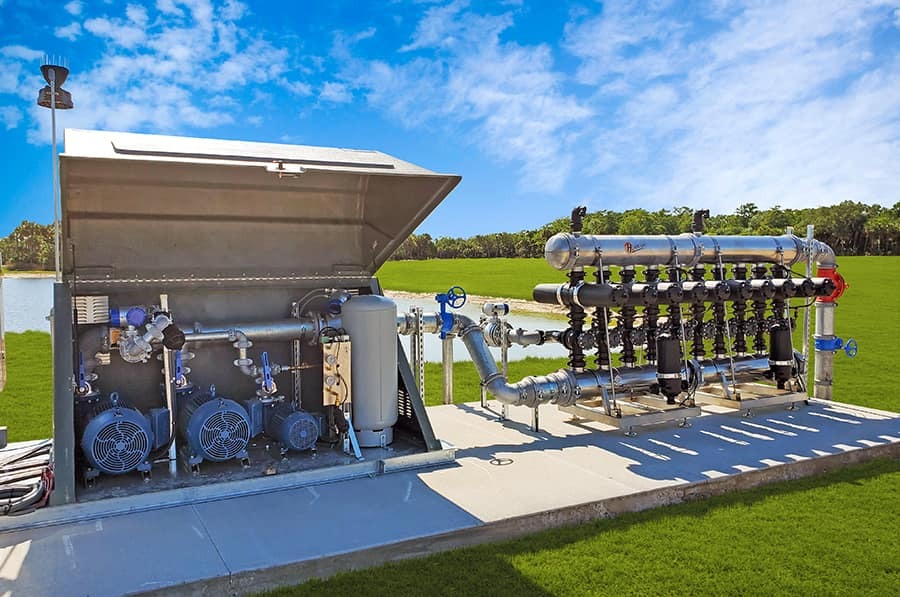
As well as deciding the size of the pump needed for your system it will also be necessary to select a specific type of pump. It's true to say that the bulk of pumps used for irrigation are centrifugal pumps, and of these, it's the horizontal centrifugal pump that's most popular. But there are several variations of centrifugal pump available.
End-suction pumps are best suited to irrigation systems that are moving smaller volumes of water. The pump is mounted on the drive-shaft of the motor running it; in so much so in fact that the pump and motor appear to be a single operational unit. These pumps are more efficient at pushing water out of the pump than pulling it in - for this reason they're best utilized in scenarios where the pump can be located less than five feet above the surface of the water source.
In many cases, pumping water from a lake for irrigation will involve the use of a submersible pump. This is an electrically powered centrifugal pump which can be left in-situ, suspended somewhere between the surface of the lake and the lake floor, high enough to minimize the risk of the pump taking in debris from the bottom of the lake. The advantages of submersible pumps include the fact that they do not require priming and, once installed, need little if any monitoring. They are also capable of pushing water over the kind of distances that a large scale irrigation system might require, particularly if several single stage submersible pumps are installed in series to create a multi-stage pumping system.
Turbine pumps offer an alternative to submersible pumps. They can also be located under water, however. unlike the submersible pump, the turbine pump motor is situated above the water, driving the pump via a shaft which runs vertically down a pipe located under the motor. The water being pumped is pushed up the pipe shaft, exiting via the pipe. They're very popular for drawing water from a wet well source and have the potential for great efficiency, with the pumps sometimes operating in multiple stages to maximize the water pressure generated. Large turbine pumps tend to be the go-to when an irrigation system is required to move large amounts of water relatively quickly.
As we've noted, there are circumstances when a turbine system is the right choice, especially with a deep well source - but this advantage can be outweighed if the alternative is to source water direct from an irrigation lake. Turbine systems that use a wet well to pull water into a bore have the potential to add higher costs and complexity to a project. Not only this, the stagnant water in the average wet well can get dirty and contaminated. Anything that's in the water source can make its way into the pumping equipment and endanger the health of the landscape. On the other hand, a healthy lake is a self-sustaining entity capable of maintaining rich and diverse life forms as well as clean water that won't have a negative impact on the health of your landscape. Incidentally, to read more on the topic of wet wells, check out our discussion on wet wells vs. irrigation lakes.
One solution which combines the best of both worlds is the use of an above ground centrifugal pump. These pumps draw water from the lake using the same method as a submersible centrifugal pump, but because they are located above ground they are easier to install than submersible pumps, and also offer greater access for the purposes of servicing and any repair work which needs to be carried out.
In all cases, advances in solar energy technology mean that pumps driven by solar energy are likely to become increasingly prevalent in the future, whether as a stand-alone option or an adjunct to mains powered pumps. Pumps powered in this way could pump water into tanks when the sun is shining - for distribution later - or they can store solar power in battery form to allow continued operating when the sun is no longer shining.
It's worth saying that at Hoover, we always prefer to irrigate from lakes. This is for several reasons, not least of which is our location in Florida. This being the case, here are some very compelling points for today's world. First of all, lakes, whether natural or man-made are an established feature of the Florida environment. An irrigation lake is a living, breathing, ecosystem far removed from the stagnant environment created by the average wet well – and one that’s capable of providing a flexible and healthy water source for a landscape. Of course, a lake doesn't just look after itself. Far from it. Any irrigation lake needs to be regularly maintained because the water is still subject to the conditions and contamination which can all too easily diminish the water quality. If you're interested in some of the basic principles around lake health our Primer on irrigation lake health post explains more.
Secondly, irrigation lakes have a (next to) unlimited lifespan. A 6-8ft wide, 20ft deep wet well will dry up as soon as the water that supplies it (or the water table) drops too low. Not only this, wet wells are a resource-hungry solution, from creating culverts of the right size and keeping debris to a minimum to constantly monitoring the flow of water into the well.
Third, drawing from a well maintained, healthy lake makes sense for solid environmental reasons - you'll be cutting down on the need to use chlorine and other chemicals to clean your water. Enough said.